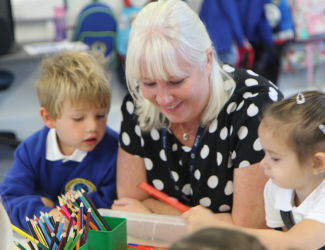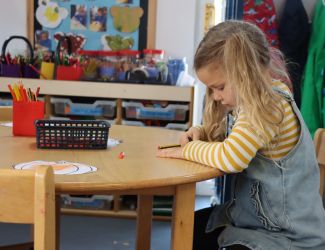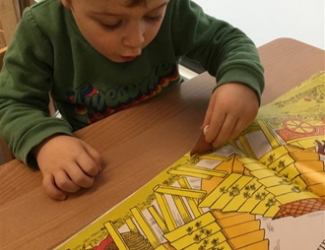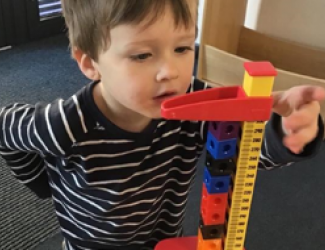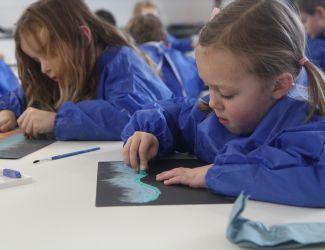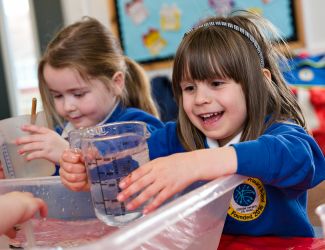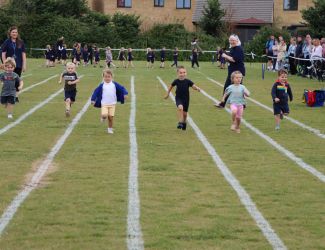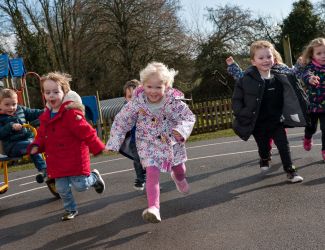Nursery Mathematics Curriculum
Children will be taught...
EYFS Development Matters Statements Birth to Three
- Combine objects like stacking blocks and cups. Put objects inside others and take them out again.
- Take part in finger rhymes with numbers.
- React to changes of amount in a group of up to three items.
- Compare amounts, saying ‘lots’, ‘more’ or ‘same’.
- Develop counting-like behaviour, such as making sounds, pointing or saying some numbers in sequence.
- Count in everyday contexts, sometimes skipping numbers - ‘1-2-3-5.’
- Climb and squeeze themselves into different types of spaces.
- Build with a range of resources.
- Complete inset puzzles.
- Compare sizes, weights etc. using gesture and language - ‘bigger/little/smaller’, ‘high/low’, ‘tall’, ‘heavy’.
- Notice patterns and arrange things in patterns.
EYFS Development Matters Statements Three to Four Year Olds
- Develop fast recognition of up to 3 objects, without having to count them individually (‘subitising’).
- Recite numbers past 5.
- Say one number for each item in order: 1,2,3,4,5.
- Know that the last number reached when counting a small set of objects tells you how many there are in total (‘cardinal principle’).
- Show ‘finger numbers’ up to 5.
- Link numerals and amounts: for example, showing the right number of objects to match the numeral, up to 5.
- Experiment with their own symbols and marks as well as numerals.
- Solve real world mathematical problems with numbers up to 5.
- Compare quantities using language: ‘more than’, ‘fewer than’.
- Talk about and explore 2D and 3D shapes (for example, circles, rectangles, triangles and cuboids) using informal and mathematical language: ‘sides’, ‘corners’; ‘straight’, ‘flat’, ‘round’.
- Understand position through words alone – for example, “The bag is under the table,” – with no pointing.
- Describe a familiar route.
- Discuss routes and locations, using words like ‘in front of’ and ‘behind’.
- Make comparisons between objects relating to size, length, weight and capacity.
- Select shapes appropriately: flat surfaces for building, a triangular prism for a roof etc.
- Combine shapes to make new ones – an arch, a bigger triangle etc.
- Talk about and identifies the patterns around them. For example: stripes on clothes, designs on rugs and wallpaper. Use informal language like ‘pointy’, ‘spotty’, ‘blobs’ etc.
- Extend and create ABAB patterns – stick, leaf, stick, leaf.
- Notice and correct an error in a repeating pattern.
- Begin to describe a sequence of events, real or fictional, using words such as ‘first’, ‘then...’

